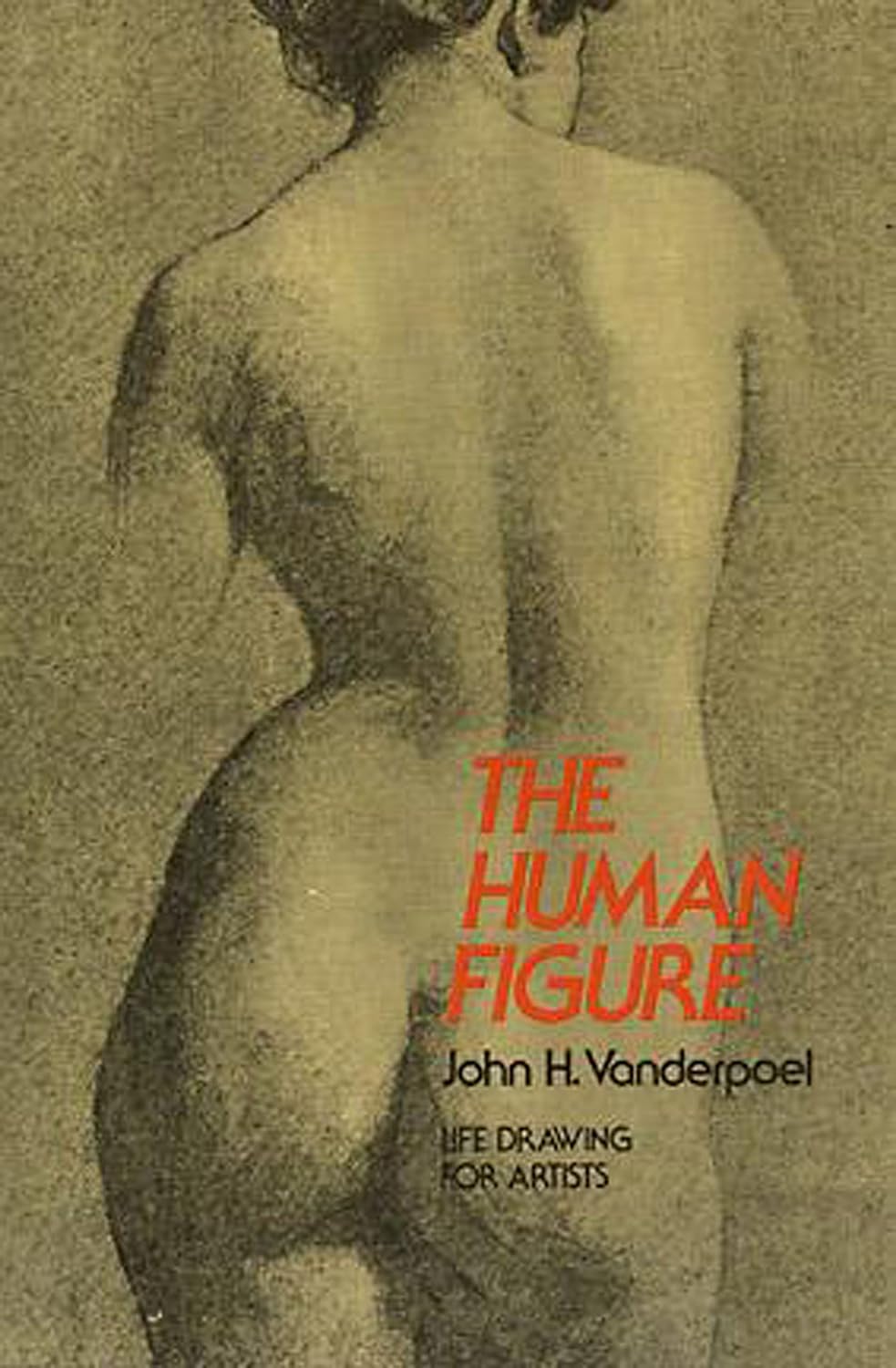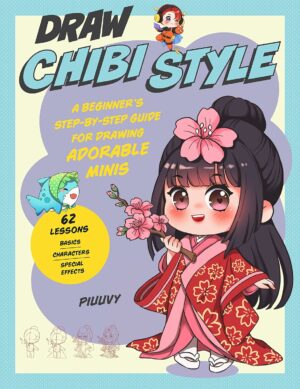This great classic is still unrivalled for its clear, detailed presentation of thousands of fundamental features of the human figure. Every element of the body (such as the overhang of the upper lip; the puckering at the corners of the mouth; the characteristic proportions of the head, trunk, limbs, etc.; the tension between connected portions of the body; etc.) is carefully and concisely pointed out in the text. Even more helpful are the 430 pencil and charcoal drawings that illustrate each feature so that you are, in effect, shown what to look for by a master teacher.
The result is the only art instruction book which not only illustrates details of the body but directs your attention at every stage to a host of subtle points of shading, curvature, proportion, foreshortening, muscular tension, variations due to extreme age or youth, and both major and minor differences in the structure and representation of the male and female figure. Comprehensive discussions and drawings cover the eyes; nose, mouth and chin; ear; head, trunk, back and hips; neck, throat, and shoulder; shoulder and arm; hand and wrist; leg; foot; the complete figure; and other interdependent groups of structures. This is the human figure as the artist, art student, and art teacher must know it in order to avoid many deceptive errors unfortunately common in much modern portraiture, painting, and illustrative art.
The result is the only art instruction book which not only illustrates details of the body but directs your attention at every stage to a host of subtle points of shading, curvature, proportion, foreshortening, muscular tension, variations due to extreme age or youth, and both major and minor differences in the structure and representation of the male and female figure. Comprehensive discussions and drawings cover the eyes; nose, mouth and chin; ear; head, trunk, back and hips; neck, throat, and shoulder; shoulder and arm; hand and wrist; leg; foot; the complete figure; and other interdependent groups of structures. This is the human figure as the artist, art student, and art teacher must know it in order to avoid many deceptive errors unfortunately common in much modern portraiture, painting, and illustrative art.
Read more
688 reviews for The Human Figure (Dover Anatomy for Artists)
Show all
Most Helpful
Highest Rating
Lowest Rating









Bernardo –
El libro llego en buenas condiciones y el servicio de entrega fue rapido
Amazon Customer –
John Vanderpoel was an artist and teacher of the late nineteenth century. He taught at the Art Insitute of Chicago for more than 30 years and died at the age of 53 in 1911. He had been president of the Chicago Society of Artists.
The Vanderpoel Art Association was founded in 1913 by friends of John H. Vanderpoel as a memorial. Contributions of paintings, drawings, prints and sculpture were given by hundreds of former students, associates and friends of Vanderpoel. The collection includes works from both prominent and obscure American artists of the early twentieth century. Many Vanderpoels, including the original drawings for “The Human Figure” are in the collection. The museum is open limited hours in Chicago, Il. at Ridge Park Fieldhouse.
I’ve used “The Human Figure” for a number of years in paintings and sculpture. Vanderpoel’s analysis of planes and positioning of features has been very helpful and is my reliable reference for figure studies.
I recently purchased a replacement copy when my first one went AWOL.
Jim Bremer
Trustee, Vanderpoel Art Association
Arturo Romero –
Llego sin una hoja doblada o arrancada el unico problema es que en la parte de al lado llego mal impreso como una raya blanca (no tengo problema con eso pero tienen que cuidar esos detalles) por lo demas todo bueno
Dpaol –
A must have for figurative artists
mario. –
Molto bello. Peccato che non sia in Italiano. È un lavorone tradurlo.comunqu è un uo strumento didattico ed esplorativo .ciao
Jesse –
This helped improve some of my skills. Very happy!
Angel H –
A good book but with bad print quality
P. Gruhn –
I am learning how to do figure drawing and portraits. I have started at chapter 1 – I read the pages and I draw each of the drawings on the page in a sketch book. The writing is a bit older English, so sometimes it is hard to know what he means. I read it again and look at the sketch and it helps out. This teaches about what is underneath what we think is there. Thus helping us to draw things better,
Erica –
I’ll start out by saying that this is a lovely book. I saw one of my favorite art instructors pull out this book on his livestream, and I thought, “Why not get a copy? Perhaps it will unlock some more understanding for me.” Well, that’s only partially true. While I understand the terminology, the way certain portions of the book are written makes it difficult to visualize what the author is saying. I had to go back and reread several paragraphs, thinking that I’ve missed some context, but I haven’t; it’s just oddly written.
An example being on page 85 of the book, the final paragraph:
“In the front of the body the buttresses fall back in a step from the abdominal plane, suggesting that, as the abdominal wall stands out in advance of the side of the buttress at its upper end, and the lower part of the buttress behind protrudes beyond the forward from below up. So that the sections of the two parts are by no means directly above one another and the center of the section just below the crest of the pelvis will fall back considerably behind a section across the waist.”
That entire paragraph was just about the torso and its relation to the pelvis. What I don’t understand is, how in the world can I visualize this? There’s not even a drawing that I can reference to even see what he’s talking about here. At least in a Loomis book, he marks his drawings by plates and refers them in text.
Bernardo –
The media could not be loaded.
O livro e bom, mas veio com a lateral rasgada.
Amazon Customer –
Brilliant drawing guide. Lots of excellent pictures for you to copy and learn from (noses, mouths, ears, figures, etc.). I learned so much. You can draw right on the pages next to the figures. Also, excellent text to guide drawing but you can learn just from copying too! I liked it enough to purchase a second copy to go through again. You can see yourself improve!! I believe it would be excellent for anyone, at any level. I am using at the beginner’s level, but the tips and examples are superb for anyone. No more simplistic, cartoonish heads, etc.!! Small and powerful!!!
Louisa Crebar –
I am not sure how folks can rate something from another era..who is to know what was in this person’s mind at the of time writing. I found the book very interesting. I’m not an accomplished artist but I found it useful. And someone thought enough of this man’s art to devote an art gallery where his works are collected and displayed (outside of Chicago.) He taught art and made it his lifes work. He was a very accomplished artist. And he made a living from his art. How many can say that? Maybe what we should say instead is that this book does or doesn’t suit us at the moment. Since it still is sought after long after Mr. Vanderpoel’s death I would have to say it has it’s merits. After seeing paintings of Mr. Vanderpoel’s, I think he was a pretty good artist and certainly did what he was driven to do and ranks among the better American artists. Being a member of the Vanderpoel family makes me very proud.
Evangeline T. –
Very disappointed! I didn’t realize until I purchased this Dover version just now and quickly browsed through the images that it’s different from “The Human Figure” by the same author. I bought it because I thought they were the same book but just by a different publisher, and since it’s more expensive I thought it may have better resolution images. Wrong!!!
I’ve just found out that the Dover version is based on the 2nd edition, whereas the other one is based on the 4th edition.
I’ve just purchased the 4th edition version (https://www.amazon.com.au/dp/B00AOBDX0E/ref=pe_1007802_166382322_TEM1DP). It definitely has better images and better contents.